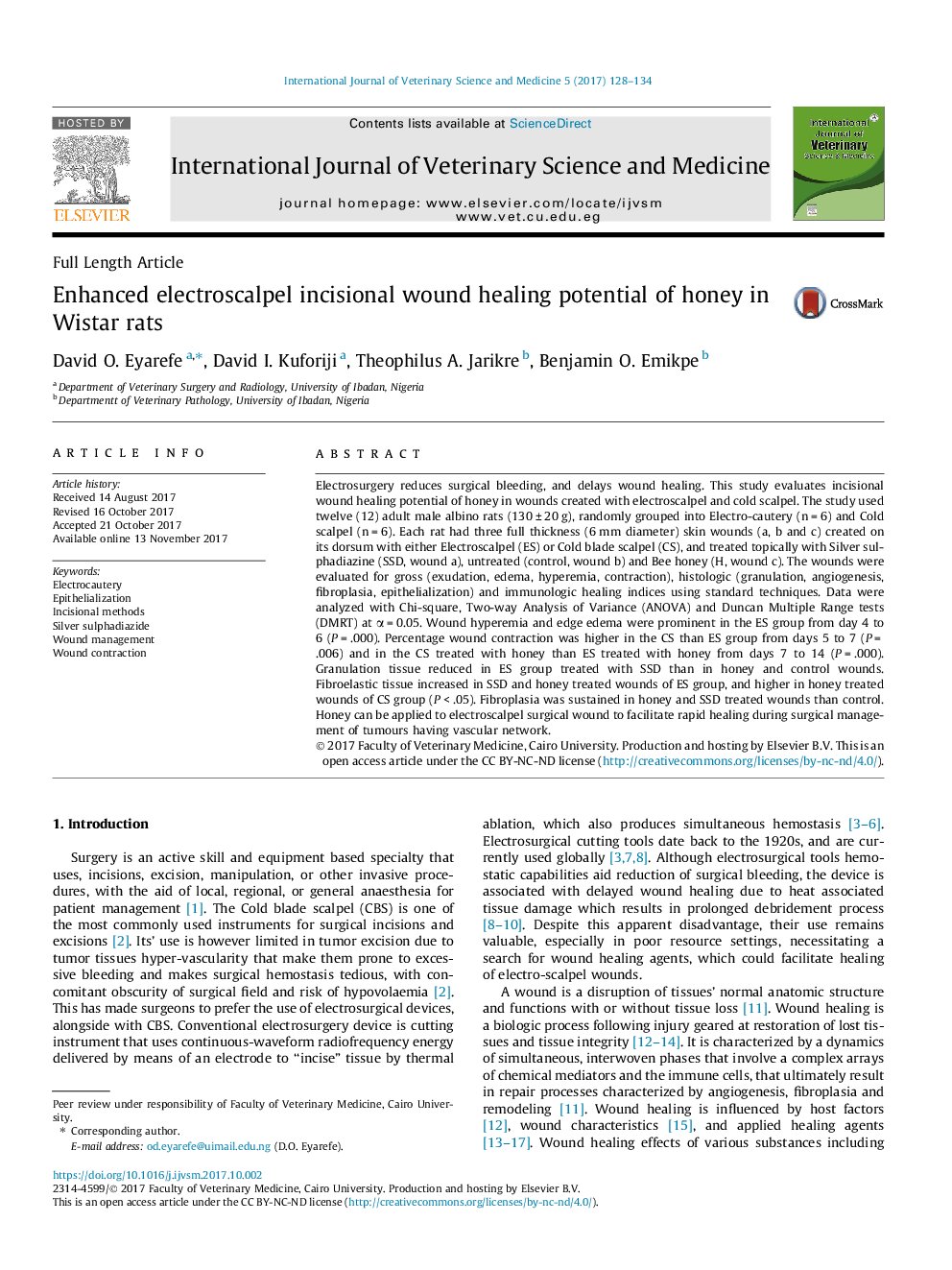| کد مقاله | کد نشریه | سال انتشار | مقاله انگلیسی | نسخه تمام متن |
|---|---|---|---|---|
| 8482327 | 1551521 | 2017 | 7 صفحه PDF | دانلود رایگان |
عنوان انگلیسی مقاله ISI
Enhanced electroscalpel incisional wound healing potential of honey in wistar rats
ترجمه فارسی عنوان
پتانسیل بهبودی زخم برقی الکتروکالپال عسل در موش های صحرایی ویستار
دانلود مقاله + سفارش ترجمه
دانلود مقاله ISI انگلیسی
رایگان برای ایرانیان
کلمات کلیدی
موضوعات مرتبط
علوم پزشکی و سلامت
علوم و ابزار دامپزشکی
دامپزشکی
چکیده انگلیسی
Electrosurgery reduces surgical bleeding, and delayed wound healing. This study evaluated comparative incisional wound healing potential of honey in wound created with electroscalpel and cold scalpel. The study used twelve (12) adult male albino rats (130â¯Â±â¯20â¯g), randomly grouped into Electro-cautery (nâ¯=â¯6) and Cold scalpel (nâ¯=â¯6). Each rat had three full thickness (6â¯mm diameter) skin wounds (a, b and c) created on its dorsum with either Electroscalpel (ES) or Cold blade scalpel (CS), and treated topically with Silver sulphadiazine (SSD, wound a), untreated (control, wound b) and Bee honey (H, wound c). The wounds were evaluated for gross (exudation, edema, hyperemia, contraction), histologic (granulation, angiogenesis, fibroplasia, epithelialization) and immunologic healing indices using standard techniques. Data were analyzed with Chi-square, Two-way Analysis of Variance (ANOVA) and Duncan Multiple Range tests (DMRT) at αâ¯=â¯0.05. Wound hyperemia and edge edema were prominent in the ES group from day 4 to 6 (Pâ¯=â¯.000). Percentage wound contraction was higher in the CS than ES group from days 5 to 7 (Pâ¯=â¯.006) and in the CS treated with honey than ES treated with honey from days 7 to 14 (Pâ¯=â¯.000). Granulation tissue reduced in ES group treated with SSD than in honey and control wounds. Fibroelastic tissue increased in SSD and honey treated wounds of ES group, and higher in honey treated wounds of CS group (Pâ¯<â¯.05). Fibroplasia was sustained in honey and SSD treated wounds than control. Honey can be applied to electroscalpel surgical wound to facilitate rapid healing during surgical management of tumours having vascular network.
ناشر
Database: Elsevier - ScienceDirect (ساینس دایرکت)
Journal: International Journal of Veterinary Science and Medicine - Volume 5, Issue 2, December 2017, Pages 128-134
Journal: International Journal of Veterinary Science and Medicine - Volume 5, Issue 2, December 2017, Pages 128-134
نویسندگان
David O. Eyarefe, David I. Kuforiji, Theophilus A. Jarikre, Benjamin O. Emikpe,
